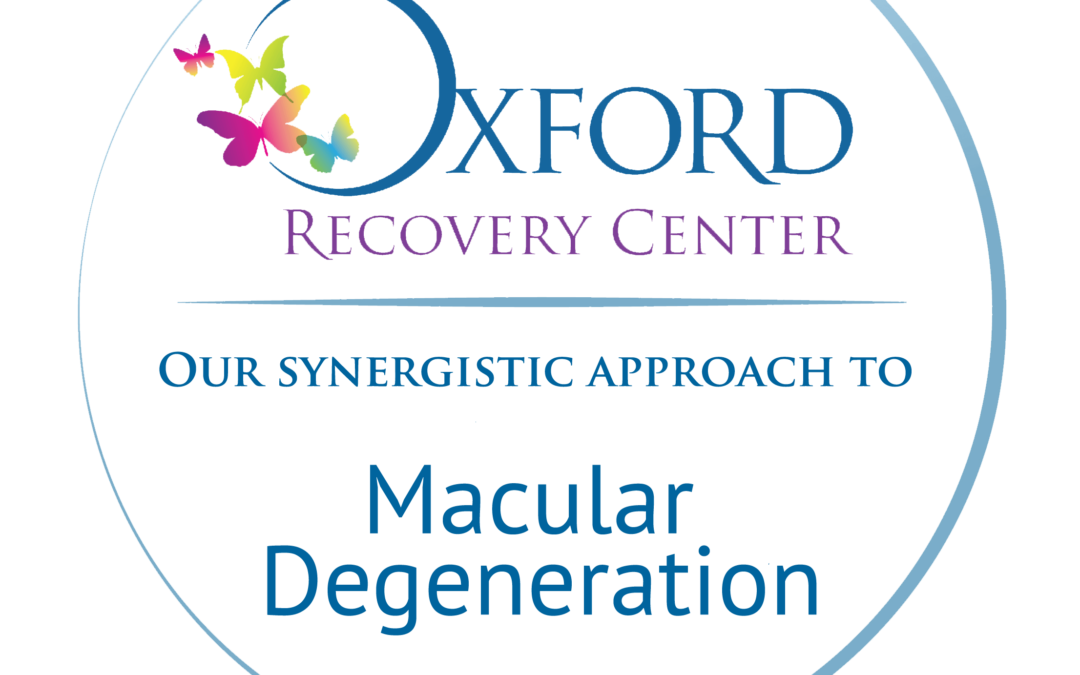Patients with Macular Degeneration (MD or AMD) have been told there is nothing that can be done to improve your eyesight. Patients that come to Oxford disagree.
Macular degeneration, also known as age-related macular degeneration (AMD), is a medical condition which may result in blurred or no vision in the center of the visual field. It is a leading cause of visual loss in the developed world. In 2015, it affected 6.2 million people globally. About 12% of people over 80 years old suffer from AMD and more than 1.8 million Americans have the advanced stage of AMD. According to the National Eye Institute, there is no cure or treatment that returns vision already lost. Injections into the actual eyeball (the vitreous) were found to possibly slow the progression of wet (also referred to as the progressive form) AMD, however, they are expensive, uncomfortable, and patients are at an increased risk of developing inflammation, retinal detachment, and intraocular infection.
There are many proposed causes for the development of AMD. While there is a genetic predisposition, environmental factors, such as tobacco usage, vitamin/mineral deficiency and heavy alcohol usage can play a role as well.
Hyperbaric oxygen therapy (HBOT) has many biologic effects, including the activation of built-in antioxidant defenses, decrease in lipid degradation, increased antibacterial actions, and acts as a regulator of inflammation, which may theoretically affect the development and/or progression of AMD. In fact, two observational studies chronicling the benefits of hyperbaric oxygen therapy in AMD have been published. The patients in these pilot studies showed two primary outcomes, visual acuity and central retinal thickness, were improved in 75% of the cases.
“At Oxford, AMD has been a condition treated regularly for 8 years. Just recently, a 90 year old patient of ours grabbed my arm, looked at me and cheerfully said that she can see out of her right eye again. For her, nothing was more important to see her grandchildren. In reality, her improved vision will also lessen the risk of falls and improve her quality of life. Other patients report similar successes, at times with vision returning to 20/20. The implications are enormous,” says Dr. Tami Peterson, CEO at Oxford Recovery Center.
In 2010, a study published by the Undersea and Hyperbaric Medical Society (UHMS) involved treating a group of 14 patients with advanced AMD. There were no complications. The improvements, whether in visual acuity or visual field, were maintained at subsequent follow-up visits. It was concluded that a greater number of hyperbaric oxygen treatments may have resulted in (even) better visual results.
When there is evidence like this, scientific and anecdotal, achieving improvements in visual acuity and/or in the visual field in cases considered untreatable by presently accepted methods, we need to weigh in all options for these patients and discuss the risks versus benefits. Certainly more studies are needed, however, if these preliminary studies hold up in larger trials, then it would have immense public health implications for the more than 7 million individuals in the U. S. at high risk for visual loss from AMD.

